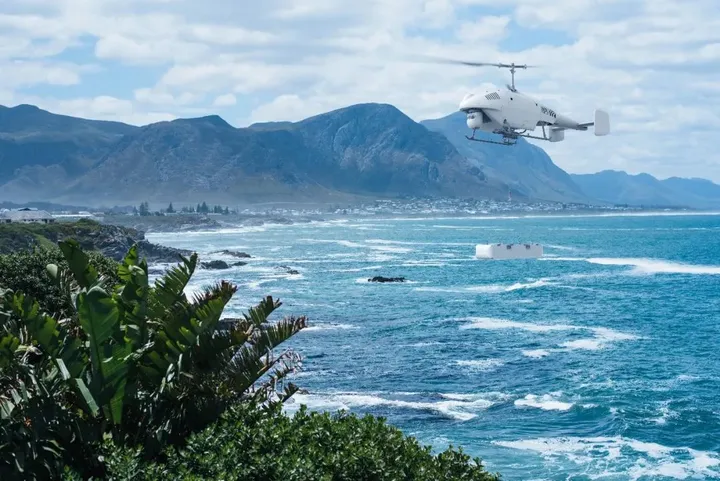On February 20, 2024, Unite Aircraft made its first
debut appearance at the Singapore Airshow, attracting significant attention
from domestic and international media as a standout among the Chinese
contingent of exhibotors. The international aviation professional media,Aviation International News,
features United Aircraft extensively, showcasing to a global audience the
latest unmanned technology and achievements from China, allowing them to
experience the company's strength and charm.
The Singapore Airshow, one of the largest and most important aerospace and defense exhibitions internationally, provides a platform for UVA companies to interact with global suppliers, customers, and partners. At this exhibition, United Aircraft showcased its latest technologies and products, including large-payload unmanned helicopters, multi-rotor drones, and intelligent airspace command and control systems, as well as unmanned solutions for various industries.
This exhibition has garnered attention from global investment institutions, partners, and customers for United Airlcraft, aiding the company in exploring more research and collaboration initiatives. It has also helped the company to gain insights into global market trends and industry perspectives, thereby enhancing United Aircraft' global reputation and influence.
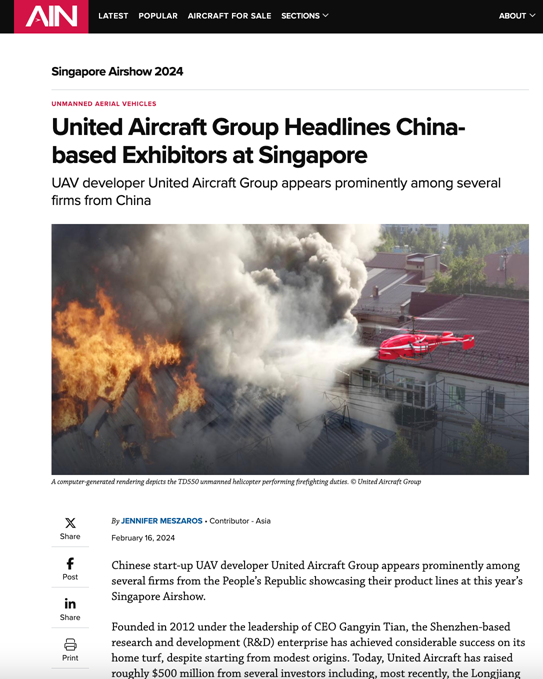
The following is the full report:

With a diverse portfolio that includes uncrewed helicopters, multi-rotor small drones, ground and onboard equipment, rotor blades, and composite products, United Aircraft has positioned itself as a key UAV player, supplying the Chinese government and military as well as various partners. Its products, deployed in provinces such as Beijing, Heilongjiang, and Anhui, cover applications including emergency rescue and powerline inspection, Tian said.
Along with Shenzhen, the company operates in Beijing, Guangdong, Anhui, Shaanxi, Sichuan, Shanghai, Heilongjiang, and Gansu.
“We've set up a comprehensive base that encompasses UAV design, R&D, production, subassembly, final assembly, testing, and system joint commissioning,” said Tian. “With the support of governments and investors, we are going to invest more into new-gen aircraft represented by tiltrotor UAV and accelerate product R&D and application.”
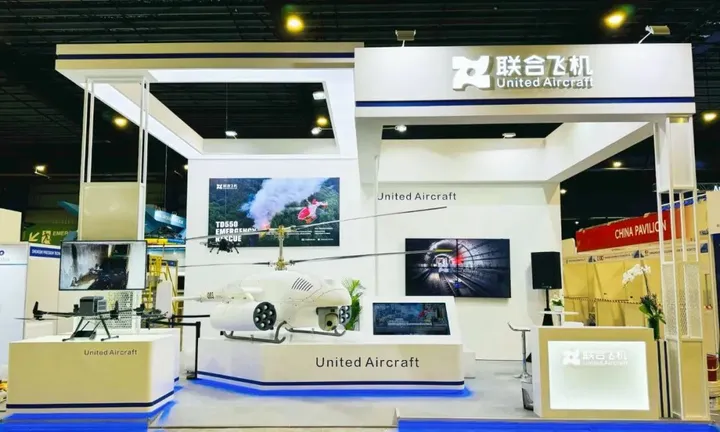
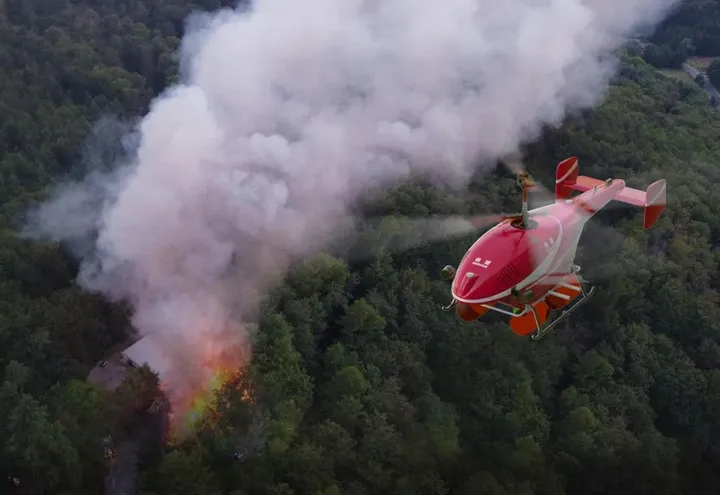
Powered by a supercharged piston engine, the TD550 adopts a redundant flight control system and includes a fiberoptic gyroscope inertial navigation system plus China’s BeiDou Navigation Satellite System. Among its functionalities, the TD550 allows for manual control, program-controlled flight, and one-click full autonomous flight.
The high-precision HeliAp flight control system manages autonomous takeoff and landing, fixed-point hover, autonomous obstacle avoidance, emergency return, and precision point delivery. It can perform in various environments, demonstrating resistance to high and low temperatures, humidity, rain, sand, dust, salt spray, mold, and low pressure.


“With TD550’s 200 kg payload, it was able to help deliver supplies to victims,” he explained. “The small size of Q20 played the role of river patrol, and the TD220, equipped with a base station, carried the duty on communication relay.”
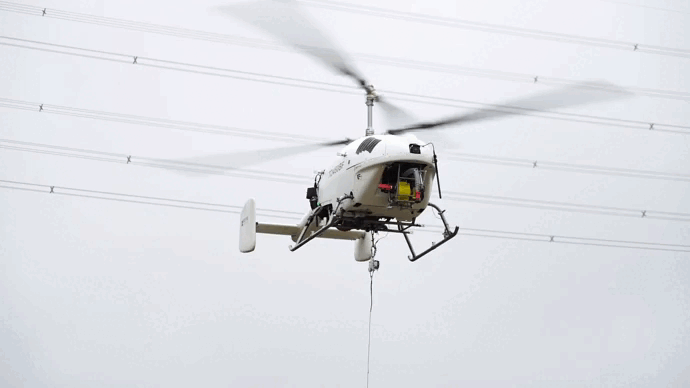
Using 3D time-of-flight sensing technology, the Q20 offers 3D modeling, six-way obstacle avoidance, intelligent identification, and path planning in complex environments. It also adopts the BeiDou short-message communication technology as a safety control system feature.
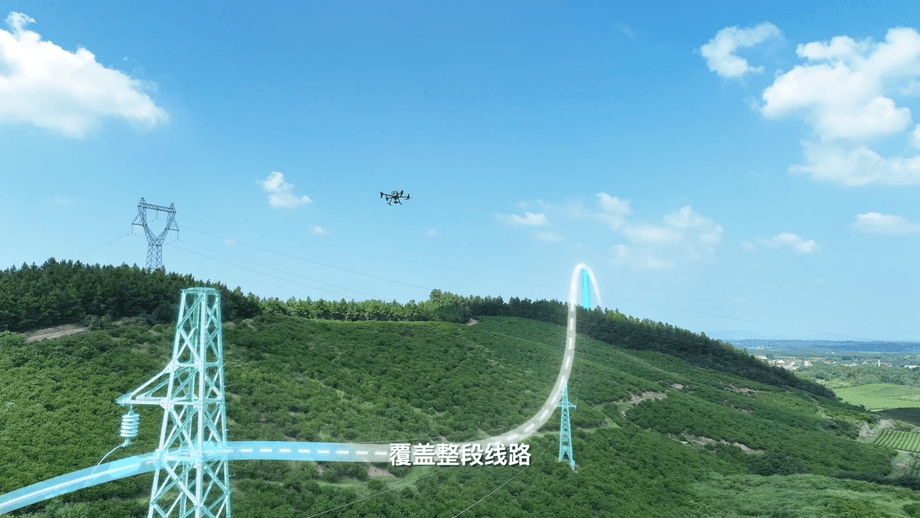
Designed for ease of use, cost-effectiveness, and reliability in temperatures as low as -40°C, the drone already has found widespread application in various domestic sectors, including energy, agriculture, forestry, public security, and policing.
“The Q20, along with the TD550, is making its debut on the international stage at the Singapore Airshow,” said Tian. “In addition, three drones—the Q3 pipeline inspection microdrone, the Q4 warehouse inspection microdrone, and the Q5 tunnel patrol drone—will be on display. These five products form a complete product matrix to meet the different product needs of the client.”

Meanwhile, United Aircraft's latest model, a six-tonne aviation-class tiltrotor UAV, remains under development and will not appear at the show. With a range exceeding 1,864 miles, the design integrates a helicopter’s vertical takeoff, landing, and hovering capabilities and the high-speed cruising ability of a fixed-wing propeller aircraft.
“We have achieved good results in the R&D of the tiltrotor UAV,” added Tian. “At present, the project has completed the detailed design phase and has entered full trial production,” adding that the company stands poised for a breakthrough year in 2024.
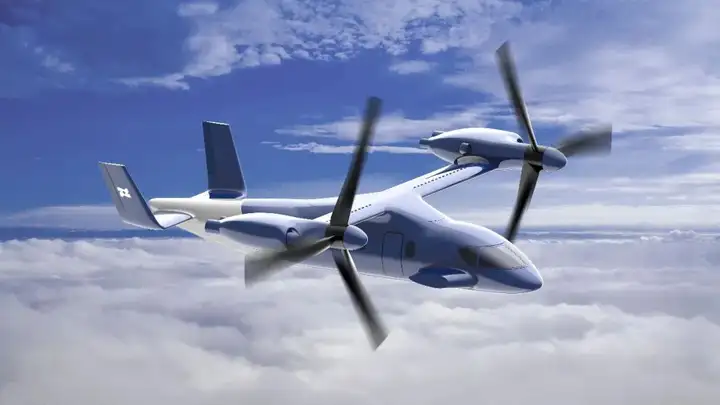
Given China's advanced maturity in the UAV sector, Tian expressed optimism that UAVs, including eVTOL and tiltrotor designs, will deploy and proliferate in the coming decade.
“The development of China's UAV industry has reached world-class level,” he said. “China's consumer-grade drones are leading the world, and industrial-grade UAVs are experiencing a period of rapid growth. In the future, UAVs will develop towards large load capacity, long endurance, and artificial intelligence. UAVs will also complete multiple tasks in one flight and work collaboratively.”
Beyond China’s borders, Tian has established a Singapore-based R&D institute to spur advancements in AI, autonomous flight operations, and related technologies. Drones, such as the Q5 tunnel patrol drone, have entered into operation in the Singapore market, specifically in subway tunnels for inspecting wall cracks and water leaks.
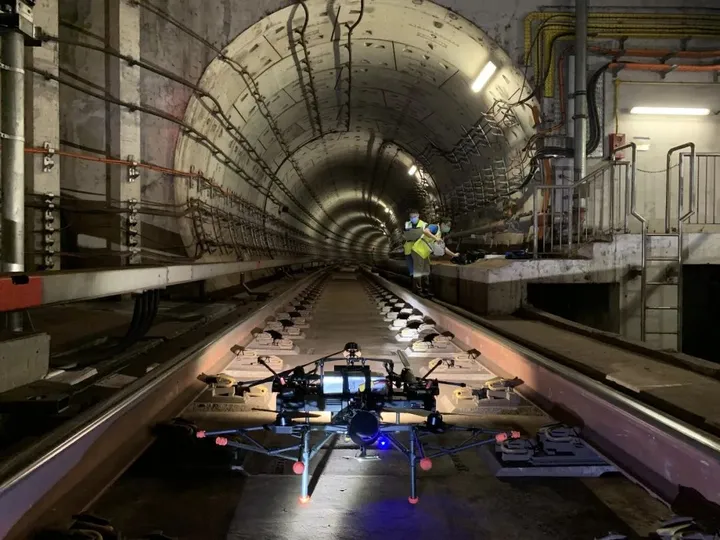
“The mission of the UAV enterprise is to enhance quality and efficiency across various industries, eliminating the need for workers to engage in hazardous labor,” he said. “We are willing to establish cooperation with Southeast Asian countries to promote the development of the local UAV industry and exchange experience with each other as well as help upgrade traditional industries, such as agricultural protection, transportation across islands, and public security.”
